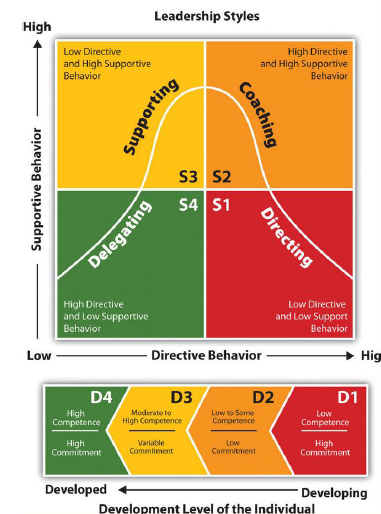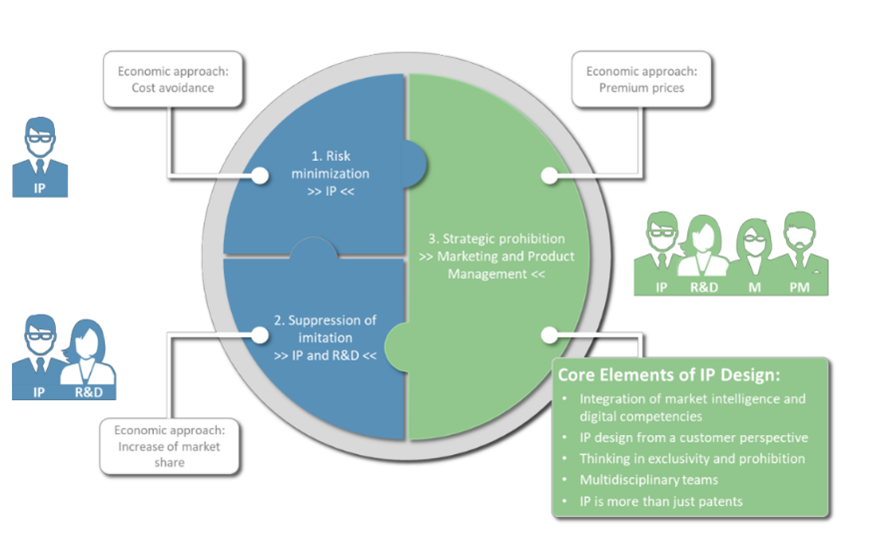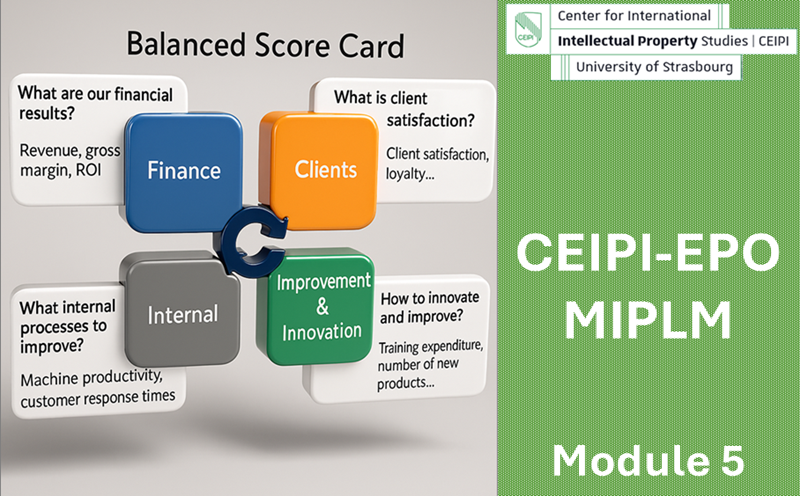How the CEIPI MIPLM Module 5 Shapes Visionary IP Leaders through Strategy, Control, and Human-Centric Leadership
In today’s knowledge-driven economy, intellectual property (IP) plays a vital role in enabling innovation, driving competitiveness, and safeguarding value creation. Yet, the ability to manage and lead in the IP domain requires far more than legal and technical know-how. It demands a combination of strategic foresight, leadership acumen, and performance measurement. Module 5 of the CEIPI Master’s in Intellectual Property Law and Management (MIPLM) program, curated by Prof. Dr. Alexander Wurzer, stands at this intersection, providing professionals with the tools, frameworks, and mindset needed to navigate and lead within this evolving landscape.
This module dives into leadership theory and practice, explores the complexities of human resource management (HRM), and provides robust methodologies for IP-centric management control systems. In this blog, we unpack the key themes, case studies, and insights from Module 5 and explore how they transform IP professionals into visionary business leaders.
From Managers to Leaders: The Evolution Begins
The module begins by tackling a fundamental question: What is the difference between managing and leading? Based on the influential work of Warren Bennis and others, this distinction is not just academic. Managers focus on order, control, and systems; they ask “how” and “when.” Leaders, in contrast, inspire change, question the status quo, and drive people toward a shared vision. They ask “what” and “why.”
Participants learn that in IP management, the move from manager to leader is essential. Leading in this domain means envisioning new IP strategies, nurturing creativity, aligning innovation with business models, and driving interdisciplinary collaboration. Prof. Wurzer introduces the Level 5 Leadership Hierarchy, which charts a journey from being a “highly capable individual” to becoming a “Level 5 Leader” – someone who blends humility with unwavering resolve to build enduring organizations.
The key lesson? Technical skills may start your career, but leadership skills define it.
📌 You find the entry on Leadership in IP Management in the 🔎𝗜𝗣 𝗠𝗮𝗻𝗮𝗴𝗲𝗺𝗲𝗻𝘁 𝗚𝗹𝗼𝘀𝘀𝗮𝗿𝘆 here
📌 You find the 🔗𝗱𝗜𝗣𝗹𝗲𝘅 digital IP lexicon about IP as a Leadership Tool by our IP Subject Matter Experts Ilanit Appelfeld and Maria Boicova-Wynants here
Leadership Styles in Action: Situational and Archetypical Approaches
Effective leadership is not rigid but adaptive. This part of the module introduces participants to situational leadership theory, developed by Hersey and Blanchard, which argues that no single leadership style is universally effective. Instead, leaders must flexibly adjust their behaviour depending on their team’s readiness, skills, and confidence.
 Students explore four core leadership styles:
Students explore four core leadership styles:
- S1: Telling – Direct and specific guidance
- S2: Selling – Persuasive communication combined with direction
- S3: Participating – Collaborative decision-making
- S4: Delegating – Empowering and trusting capable team members
This theoretical approach is brought to life with real-world examples. Students are challenged to analyze public figures like Nelson Mandela, Steve Jobs, and Margaret Thatcher to understand how archetypical leadership styles manifest in action. These comparisons reinforce the importance of authenticity, vision, and emotional intelligence.
Key takeaway: Great leaders don’t follow a script; they read the room, understand their people, and adapt accordingly.
Human Resource Management: The People Behind the IP
People are the most critical asset in IP management. This section of the module emphasizes the significance of Strategic Human Resource Management (SHRM) as a driver of innovation and performance. Participants learn that HRM is an interdisciplinary field combining psychology, business, sociology, and pedagogy.
Topics include:
- Talent acquisition and workforce planning
- Employee development through training, coaching, and mentoring
- Job design based on the Job Characteristics Model (task significance, autonomy, feedback)
- Coaching and mentoring as long-term tools for leadership development
One highlight is the exploration of mentoring relationships, which provide emotional, professional, and organizational integration. Participants analyze how coaching differs from mentoring and how both contribute to the growth of “high potentials.”
Case studies, such as Google’s HR strategy, help students understand how talent management is intricately linked to innovation in high-performance environments.
Insight: People are not resources to be used—they are assets to be cultivated.
📌 You find the entry on Coaching, Training and Mentoring in IP Management in the 🔎𝗜𝗣 𝗠𝗮𝗻𝗮𝗴𝗲𝗺𝗲𝗻𝘁 𝗚𝗹𝗼𝘀𝘀𝗮𝗿𝘆 here
📌 You find the entry on HR and IP Management in the 🔎𝗜𝗣 𝗠𝗮𝗻𝗮𝗴𝗲𝗺𝗲𝗻𝘁 𝗚𝗹𝗼𝘀𝘀𝗮𝗿𝘆 here
The Motivation Multiplier: Intrinsic vs. Extrinsic Rewards
What drives people to give their best in knowledge-intensive fields like IP? This section explores motivational theories with a special focus on intrinsic motivation—a force that stems from personal satisfaction, curiosity, and a desire to contribute.
Key concepts covered include:
- Expectancy Theory: Motivation = Expectancy x Instrumentality x Valence
- Five-Factor Model of Motivation: Identification, challenge, situational motivation, discouragement reduction, and implementation support
- Intrinsic vs. Extrinsic Rewards: From autonomy and meaning to bonuses and promotions
The module also tackles common causes of employee discouragement: poor communication, unclear goals, autocratic leadership, and lack of recognition. Tools such as performance feedback, outplacement support, and structured interviews are recommended to address these challenges.
Participants are shown how new compensation programs (e.g., gain-sharing, team-based rewards, lifestyle awards) are increasingly replacing outdated, one-dimensional reward systems.
Core lesson: Motivation is not a formula—it’s a mindset leaders must cultivate through meaningful engagement.
Teamwork: The Power of IP Collaboration
Teamwork in IP management is more than cooperation; it is strategic collaboration across disciplines, geographies, and departments. The module outlines the five classic stages of team development (forming, storming, norming, performing, and adjourning) and emphasizes the leader’s role in each phase.
Key frameworks include:
- Team Cohesiveness vs. Performance Norms: High-performing teams require both unity and alignment with organizational goals
- Conflict Resolution Models: From competition to collaboration, participants learn strategies to manage interpersonal challenges
- Empowerment Continuum: From suggestion programs to self-managed teams
Through this lens, teamwork is revealed as a lever for innovation and agility. Leaders must act as facilitators, conflict mediators, and vision carriers to ensure team effectiveness.
Lesson: In IP, the best ideas often come from collaboration—not from silos.
📌 You find the entry on Teamwork in IP Management in the 🔎𝗜𝗣 𝗠𝗮𝗻𝗮𝗴𝗲𝗺𝗲𝗻𝘁 𝗚𝗹𝗼𝘀𝘀𝗮𝗿𝘆 here
Management Control Systems (MCS): Where Strategy Meets Measurement
In the digital economy, what gets measured gets managed. This portion of Module 5 equips students with the tools and methodologies to create robust Management Control Systems (MCS). These systems are vital for translating strategic goals into operational reality.
Participants are introduced to:
- Strategic vs. Operative Control
- Feedforward, Concurrent, and Feedback Control Models
- Tools such as Activity-Based Costing, Balanced Scorecards, and SWOT analysis
The module stresses that while tangible metrics like ROI are important, modern organizations must also account for intangible assets like brand, trust, and innovation capabilities.
📌 You find the 📑𝗜𝗣 𝗠𝗮𝗻𝗮𝗴𝗲𝗺𝗲𝗻𝘁 𝗟𝗲𝘁𝘁𝗲𝗿𝘀 about the power of metrics here
IP Controlling: Transforming IP from Cost Centre to Strategic Asset
IP Controlling is arguably the most specialized and groundbreaking aspect of Module 5. It introduces a comprehensive framework for assessing the value, performance, and alignment of IP assets with broader business goals.
Participants learn to use the IP Controlling Cockpit, which integrates:
- IP Cost Control: Tracking official fees, attorney costs, and renewals
- Business Model Alignment: Mapping IP assets to customer value and strategic priorities
- Market Impact Assessment: Estimating how IP drives pricing power, exclusivity, and differentiation
 Limitations of traditional control systems in managing IP are also discussed. For example, IP rights are legally fixed, technically complex, and hard to value. Hence, classical financial tools need to be adapted or replaced with IP-specific KPIs.
Limitations of traditional control systems in managing IP are also discussed. For example, IP rights are legally fixed, technically complex, and hard to value. Hence, classical financial tools need to be adapted or replaced with IP-specific KPIs.
Lesson: Strategic IP controlling makes the invisible visible—turning rights into revenue.
📌 You find the entry on Management Control System (MCS) in the 🔎𝗜𝗣 𝗠𝗮𝗻𝗮𝗴𝗲𝗺𝗲𝗻𝘁 𝗚𝗹𝗼𝘀𝘀𝗮𝗿𝘆 here
📌 You find the entry on IP Process Controlling in the 🔎𝗜𝗣 𝗠𝗮𝗻𝗮𝗴𝗲𝗺𝗲𝗻𝘁 𝗚𝗹𝗼𝘀𝘀𝗮𝗿𝘆 here
📌 You find the entry on Strategy Map in the 🔎𝗜𝗣 𝗠𝗮𝗻𝗮𝗴𝗲𝗺𝗲𝗻𝘁 𝗚𝗹𝗼𝘀𝘀𝗮𝗿𝘆 here
📌 You find the entry on Balanced Scorecard in the 🔎𝗜𝗣 𝗠𝗮𝗻𝗮𝗴𝗲𝗺𝗲𝗻𝘁 𝗚𝗹𝗼𝘀𝘀𝗮𝗿𝘆 here
IP Design as a Leadership Tool
IP design goes beyond aesthetics or legal protection; it is a powerful leadership instrument for shaping perception, enabling differentiation, and guiding strategic intent. This section of the module explores the concept of IP-Design Integration, which positions design not just as a downstream activity, but as a core driver of competitive advantage.
Participants examine how design can support leadership by:
- Communicating a company’s innovation culture and identity
- Guiding the development of intangible assets such as brands and patents
- Aligning design strategies with business and IP goals
 Design becomes a form of visual and strategic language that leaders use to engage customers, inspire teams, and signal long-term vision. Examples include companies like Apple and Dyson, where design and IP are inseparable from leadership.
Design becomes a form of visual and strategic language that leaders use to engage customers, inspire teams, and signal long-term vision. Examples include companies like Apple and Dyson, where design and IP are inseparable from leadership.
Insight: Design is not what it looks like. It’s how it works, competes, and leads.
📌 You find the entry on IP Design in the 🔎𝗜𝗣 𝗠𝗮𝗻𝗮𝗴𝗲𝗺𝗲𝗻𝘁 𝗚𝗹𝗼𝘀𝘀𝗮𝗿𝘆 here
Design Thinking: A Framework for IP Innovation
Design thinking is a human-centred methodology that fosters creativity, empathy, and iterative problem-solving. In this part of the module, students explore how design thinking can be harnessed to drive IP strategy and organizational transformation.
The design thinking process includes:
- Empathize: Understand user needs deeply
- Define: Reframe challenges in ways that open new opportunities
- Ideate: Generate a wide range of creative solutions
- Prototype: Build to learn quickly
- Test: Refine through user feedback
Applied to IP, this approach encourages professionals to look beyond technical solutions and consider emotional and functional value. It also helps in creating more user-relevant innovations, brand identities, and business models that are easier to protect and more valuable.
Insight: Design thinking transforms IP from a technical output into a human-centred asset.
📌 You find the entry Design Thinking in the 🔎𝗜𝗣 𝗠𝗮𝗻𝗮𝗴𝗲𝗺𝗲𝗻𝘁 𝗚𝗹𝗼𝘀𝘀𝗮𝗿𝘆 here
Roberto Verganti and Design-Driven Innovation
Roberto Verganti’s theory of Design-Driven Innovation takes a radical stance: the most groundbreaking innovations don’t come from understanding user needs, but from proposing new meanings.
This module integrates Verganti’s thinking into the leadership narrative by emphasizing:
- The strategic role of interpreters: visionary leaders who redefine market logic
- The importance of radical innovation: innovations that change how users perceive value
- The creation of new languages: how products, services, and brands communicate unexpected, yet compelling meaning
Unlike user-centered design, design-driven innovation starts with a vision and reshapes the market’s expectations. Students examine how companies like Artemide and Alessi succeeded by proposing bold, meaning-changing solutions.
Insight: True leadership in IP means not just responding to trends, but creating new directions for value and meaning.
📌 You find the entry on Design Driven Innovation (DDI) in the 🔎𝗜𝗣 𝗠𝗮𝗻𝗮𝗴𝗲𝗺𝗲𝗻𝘁 𝗚𝗹𝗼𝘀𝘀𝗮𝗿𝘆 here
📌 You find episode #42 of the podcast 🎧𝗜𝗣 𝗠𝗮𝗻𝗮𝗴𝗲𝗺𝗲𝗻𝘁 𝗩𝗼𝗶𝗰𝗲 about Design and AI here
📌 You find the 📑𝗜𝗣 𝗠𝗮𝗻𝗮𝗴𝗲𝗺𝗲𝗻𝘁 𝗟𝗲𝘁𝘁𝗲𝗿𝘀 about Roberto Verganti’s perspective on Innovation, Design, and Creativity in the Age of AI here
The MIPLM Edge
Module 5 of the CEIPI MIPLM program is a masterclass in strategic IP leadership. It seamlessly combines theory with practice, emotion with metrics, and leadership with systems. By the end of the module, participants don’t just understand how to lead—they know how to design, measure, motivate, and inspire within the unique world of IP.
In a future where innovation is currency, and IP is collateral, leaders shaped by Module 5 will be the ones redefining success.



